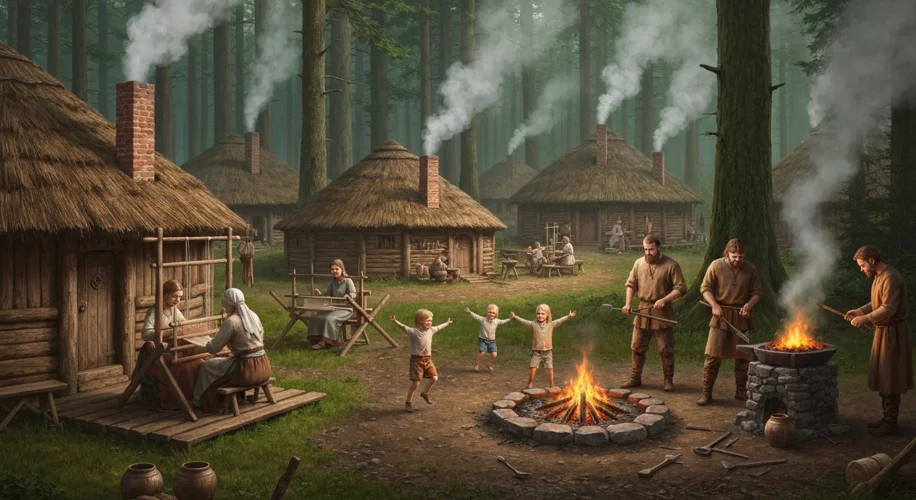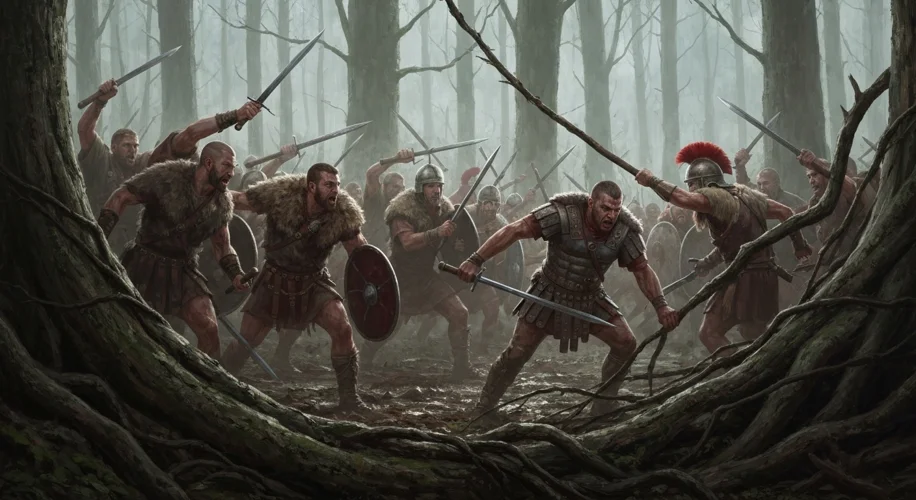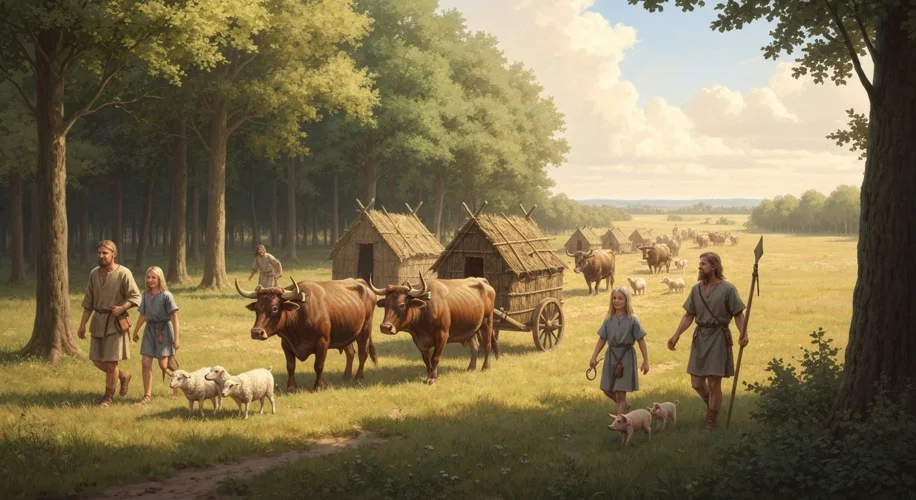Before the legions of Rome marched north, before fortified cities dotted the landscape, vast swathes of Europe were home to peoples whose lives were as fluid as the seasons. Among them were the Germanic tribes, groups often painted with broad strokes as ‘barbarians’ by their southern neighbors. Yet, delve deeper, and a complex tapestry of semi-nomadic lifestyles, intricate societal structures, and a deep connection to the land unfolds. For these were not merely rootless wanderers, but peoples whose movements and settlements were dictated by the rhythm of nature, the pursuit of resources, and the bonds of kinship.
The pre-Roman and early Roman periods, roughly from the 5th century BCE to the 1st century CE, form a crucial era in understanding the Germanic peoples. Unlike the settled agriculturalists of the Mediterranean world, many Germanic tribes practiced a form of transhumance, a seasonal migration pattern that allowed them to exploit different pastures and resources throughout the year. Imagine a large clan, perhaps numbering a few hundred individuals, striking camp as the autumn chill began to bite. Their portable homes, likely sturdy tents or wooden structures that could be dismantled, would be packed onto ox-drawn carts. Livestock – cattle, sheep, and pigs – formed the backbone of their wealth and sustenance, and their movement was intrinsically linked to the availability of grazing land.
Daily life was dictated by the needs of survival and community. While men often engaged in hunting and warfare, women were central to the domestic sphere, managing the household, tending to children, and processing essential goods like wool and grains. Craftsmanship was vital. Smiths worked with iron, fashioning tools, weapons, and essential household items. Pottery was skillfully made, often decorated with geometric patterns. The ability to create durable clothing from animal hides and woven wool was paramount against the often harsh northern climates. These skills, passed down through generations, were not merely utilitarian but also imbued with cultural significance.

The societal structure of these tribes was largely based on kinship. Extended families and clans formed the core units, bound by loyalty and mutual obligation. Leadership often fell to individuals who demonstrated prowess in warfare, wisdom in counsel, or a lineage tracing back to respected ancestors. Assemblies, where free adult males could voice their opinions and participate in decision-making, were common. This communal aspect was crucial, as collective action was often necessary for survival, whether for hunting large game, defending their territory, or undertaking seasonal migrations.
Several factors influenced their movement and settlement patterns. The availability of arable land and fertile pastures was a primary driver. As soil became depleted or grazing grounds exhausted, tribes would naturally seek out new territories. The pressure from neighboring tribes, whether Germanic or from further afield, also played a significant role, sometimes forcing migrations or leading to conflict over resources. Roman expansion, while not always a direct cause of initial movement, certainly exerted pressure on these tribal societies, pushing them further north and east, or sometimes leading to attempts at accommodation and integration.
Consider the Cherusci, a tribe whose name would become synonymous with a legendary victory over Rome at the Battle of the Teutoburg Forest in 9 CE. Their leader, Arminius, a Roman-educated chieftain, leveraged his understanding of Roman tactics to orchestrate a devastating ambush. This event wasn’t just a military triumph; it was a profound statement about the fierce independence and strategic cunning of these semi-nomadic peoples. It demonstrated their ability to coalesce, to adapt, and to defend their way of life against a seemingly invincible empire.

The semi-nomadic existence fostered a culture deeply intertwined with the natural world. Their understanding of celestial patterns, weather, and the behavior of animals was profound, crucial for navigation and resource management. Religious beliefs often centered on deities associated with nature, fertility, and war, with rituals and ceremonies tied to agricultural cycles and seasonal changes. Storytelling and oral traditions played a vital role in preserving their history, laws, and cultural identity.
The consequences of this semi-nomadic lifestyle and societal structure were far-reaching. It shaped their interactions with settled populations, leading to periods of both conflict and trade. It honed their martial skills, making them formidable adversaries and, at times, valuable allies for the Roman Empire. Ultimately, the adaptability and resilience inherent in their way of life allowed Germanic cultures to not only survive but to evolve and eventually shape the future of Europe in the centuries that followed Rome’s decline.
Understanding the Germanic tribes requires moving beyond simplistic labels. They were not simply rootless barbarians but complex societies whose semi-nomadic existence was a sophisticated adaptation to their environment, a testament to their deep cultural roots, and a force that would eventually leave an indelible mark on the Western world.

